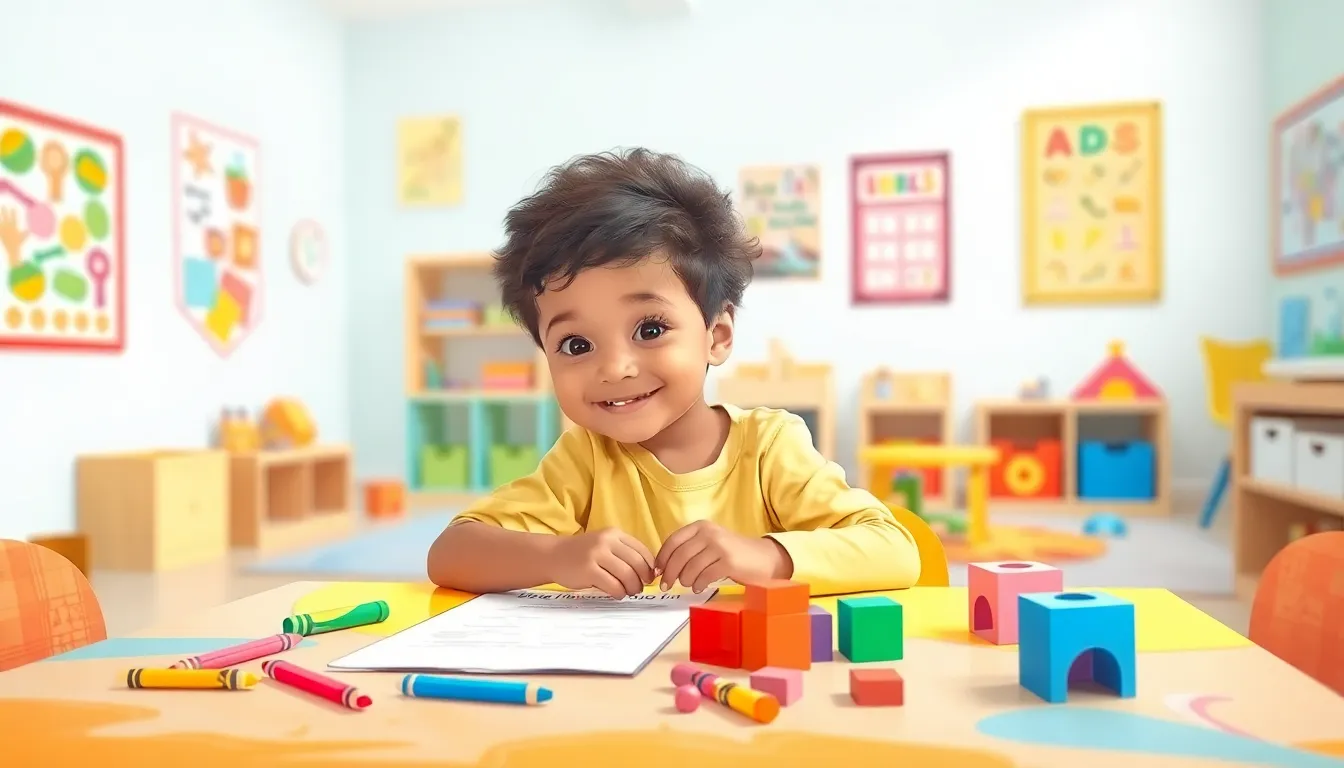Preschool homework might sound like an oxymoron, but it’s a reality for many parents navigating the wild world of early education. As if juggling nap times and snack schedules wasn’t enough, now they’re faced with the challenge of helping tiny tots tackle their first assignments. Fear not, though! With a sprinkle of creativity and a dash of patience, homework can transform from a daunting task into a delightful bonding experience.
Table of Contents
ToggleOverview of Preschool Homework
Preschool homework focuses on reinforcing skills learned in a classroom setting. Assignments may include simple tasks such as counting objects, coloring, or recognizing letters. These activities support cognitive and motor development while fostering early literacy and numeracy.
Parents often feel challenged by the limited time available for homework, especially around nap times and mealtimes. Striking a balance between daily routines and homework expectations remains essential. Approaching tasks with creativity promotes a more engaging atmosphere for children.
Various forms of homework exist in preschool education. Some assignments encourage family involvement through interactive activities. Others may include worksheets designed for individual practice, fostering independence in young learners.
Collaboration between parents and educators is crucial in promoting a positive homework experience. Teachers can provide guidance on effective assistance methods, while parents can share feedback on their child’s progress. Communication strengthens the connection between home and school, enriching children’s learning experiences.
Celebrating achievements enhances children’s motivation toward completing homework tasks. Acknowledging effort, no matter how small, builds confidence and enthusiasm. Incorporating praise into the homework routine reinforces the idea that learning is a positive journey.
Emphasizing fun transforms homework into an enjoyable activity rather than a chore. Creating a designated workspace free from distractions helps children focus on their tasks. When parents actively participate in homework, they foster a love for learning that lasts beyond preschool years.
Benefits of Preschool Homework


Preschool homework offers several advantages that support early childhood development. Engaging in homework allows children to reinforce and extend their learning experiences beyond the classroom.
Encourages Learning at Home
Learning at home boosts children’s understanding of concepts taught in preschool. Activities like counting and letter recognition provide practical application of school lessons. Families can create an environment where children feel safe to explore and ask questions. With guidance, children connect school learning to everyday life experiences. Homework also encourages parents to engage in their child’s education, facilitating discussions that deepen understanding.
Builds Routine and Responsibility
Building routine establishes a structure for children, helping them feel secure. Regular homework sessions cultivate a sense of responsibility for their tasks. Over time, children learn to manage their time effectively, balancing assignments with play. Consistent routines can also enhance focus and productivity during activities. Parents who reinforce this structure foster independence, leading to better concentration and a greater sense of achievement when completing tasks.
Tips for Parents
Creating an effective homework routine benefits children and parents. Strategies can enhance the homework experience, making tasks enjoyable and productive.
Creating a Homework-Friendly Environment
Design a dedicated space for homework. This area should be quiet and free from distractions. Ensure that it has adequate light for reading and writing. Familiarize children with their supplies, including crayons and paper, to promote independence. Establishing a consistent routine can help children understand when homework takes place. Structuring the time similarly each day builds familiarity. Parents can use visual routines, like charts, to track progress, providing motivation. Involvement in the process strengthens relationships while fostering responsibility.
Choosing the Right Resources
Select resources that align with classroom learning. Use educational toys, books, and apps that reinforce skills in a fun manner. Libraries often offer access to diverse materials suitable for various age groups. Websites provide printable worksheets that cater to specific skills, such as counting or letter recognition. Parents should assess the child’s interests when choosing activities, ensuring engagement. Interactive tools can stimulate curiosity, making learning exciting. Collaborating with teachers can unveil additional resources that support preschool learning objectives. This cohesive approach bolsters the educational experience at home.
Engaging Tools and Activities
Using engaging tools and activities can make preschool homework enjoyable. These resources support children’s learning while keeping their interest high.
Interactive Learning Apps
Interactive learning apps provide an innovative way for preschoolers to grasp essential skills. Apps like ABCmouse and Endless Alphabet encourage letter recognition and vocabulary building through playful activities. Features such as rewards create an incentive for children to keep learning. Parents can monitor progress with features that track achievements. Choosing age-appropriate apps enhances the overall experience and ensures content aligns with classroom goals.
Fun Educational Games
Fun educational games turn learning into a playful adventure for young children. Board games like Candy Land can improve counting skills while sparking family interaction. Card games such as Memory enhance memory and attention spans without feeling burdensome. Incorporating physical movement into games helps children expend energy while learning. Designing competitions between siblings or friends adds excitement and further motivators. Selecting games that match children’s interests maximizes engagement and learning outcomes.
